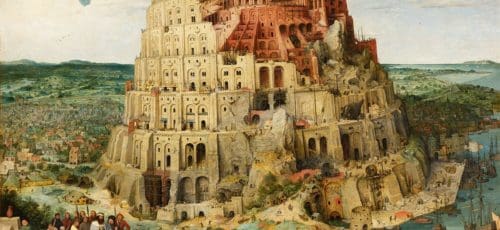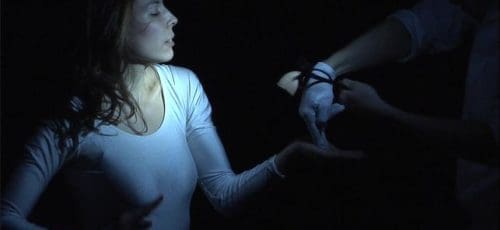Splash Zone: Water Puppets in Vietnam
Ellen Freeman is a freelance writer and former Festival Blog intern who is based in Oregon.
On my list of must-sees for the week I spent in Vietnam last month (or, as the itinerary turned out, must-eats), temples, conical hats, and sidewalk noodle stands figured high. The Thang Long Water Puppet Theatre did not. Puppets? I mistakenly thought. That’s kid stuff.
But after dark in Hanoi, Vietnam’s historic capital, my travel buddy and I found ourselves looking for something to do. We’d been playing rummy and drinking bia hoi, or glasses of fresh draft beer that local watering holes serve for pennies (literally, it’s about 20 cents a glass). But the amount of tourists that were as thrifty as they were thirsty meant that the kegs had run out almost as soon as they’d been tapped. (This happens every night. I don’t know why they don’t just make more beer.) With no desire to head back to our stifling fourth-floor walk-up, we thumbed through the Lonely Planet looking for something exciting to do.
Ranked #1 in the Hanoi entertainment section was the Thang Long Water Puppet Theatre, a show that the writers of our guidebook did not advise you to leave Vietnam without seeing. If we didn’t get lost in the Old Quarter trying to find the theater, we could still make it to the last show.
According to our map, the theater was right on Hoan Kiem, a small lake filled with giant turtles in the heart of Hanoi. Of course! I thought. It’s water puppetry so it must be performed in the lake. Puppets in a lake sounded slightly more appealing than plain old puppets, so we set off for the theater. Ignoring the many offers of rickshaw rides—getting there on time didn’t seem worth the public humiliation of being a tourist paraded on a rickshaw and then paying exorbitantly for the experience—we made our way on foot.
Arriving at our destination, I was surprised to see that the Thang Long (the imperial name for Hanoi) Theatre wasn’t on the lake, but across the street from it. But, pressed for time, we paid our 60,000 Dong (about $3) at the box office and went inside. The auditorium was small and the seats were even smaller, with legroom sacrificed in order to pack in as many audience members as possible to the company’s five daily shows.
As tardy arrivals, we squeezed past the other theatergoers—a 50/50 ratio of blue-haired tour groups from other Asian countries and vacationing families with kids—to our seats. There was no water in sight, and I was beginning to think that water puppetry would be just another in a series of misunderstandings, like the price of our hostel room or the duck feet floating in my soup. Just then, a recording in Vietnamese, French, and English welcomed us to enjoy the 1000-year-old tradition of Vietnamese water puppetry. The lights came up to reveal not a stage, but a pool of murky greenish water in front of an ornate backdrop depicting a red and gold pagoda decorated with cheery flags and banners.
Water puppetry, or mua roi nuoc, was developed in the flooded rice paddies of 11th century Vietnam as a way to delight villagers and to appease the spirits whom the ancient Vietnamese believed to rule every aspect of their lives. Legend has it that the original puppeteers endured leeches and trench foot to perfect their craft. In the Thang Long Theater, the rice paddies were brought inside in the form of a 13 x 13 foot pool of waist-deep water for the benefit of both the puppeteers and international audiences.
To the left of the pool, a small orchestra of traditional Vietnamese instruments began to play a rousing court song of trilling flutes and clanging gongs. Out popped a puppet carved to look like a Vietnamese farmer from behind a colorful fringed screen in the pagoda. Vietnamese water puppets are made of lacquered wood and can weigh as much as 30 pounds, but the puppet glided over the surface of the water, splashing and creating ripples as it danced. Two water buffalo puppets and some floating greenery emerged from behind the screen and began miming a pastoral farming scene in the pool.
The way by which the puppets move is supposed to be a “closely guarded secret,” but it didn’t take long to figure out that the puppeteers were hidden behind the screen, operating the puppets by moving horizontal poles underneath the water. Still, the effect of the puppets as they floated animatedly on the water, their movements echoed by their reflections, was captivating. Not that I had any clue what was going on in the story.
Three performers, two women and a man, sat with the orchestra and did all of the voices. The Vietnamese members of the audience chuckled as the performers accented what I assumed to be punch marks with clacks of percussion instruments and dings of bells. In keeping with tradition, water puppetry is performed solely in Vietnamese. Scattered English and French recordings helped to explain the significance of some of the pieces and skits, but the subtleties of the stories, which draw upon folklore and Buddhist parables, were mostly lost on me. The experience would have definitely been enriched with an English translation in the program but even though I couldn’t understand the words, watching the spectacle of the beautifully carved figures rising from the depths of the pool and diving underneath the surface as they performed a watery waltz was engaging. A fisherman puppet in a puppet boat struggled with a giant puppet fish, a flock of puppet water fairies performed a seductive, synchronized dance, and a puppet battle waged between puppet soldiers on horseback. More than once I found myself chuckling at puppet slapstick.
Though the puppetry was dazzling, the music was what made the performance really special.
“The puppets have a soul,” writes Italian filmmaker Alessandra Grassi on her blog about the documentary she’s making on Vietnamese water puppetry. “Half of their soul is music.”
The wooden puppets can be cumbersome to operate, their movements were more jerky and symbolic than the often intricate and startlingly lifelike movements of marionettes—because of this, the music in water puppetry plays an important role in the expression of the piece.
Most of the songs we heard were Vietnamese folk songs, and one particularly lively piece has been recognized by UNESCO as intangible cultural heritage. The melodies were sung in unison by the two women, whose earthy voices dipped in and out of dissonance but blended harmoniously with the unique Vietnamese instruments. A solo on the dan bau, a single-stringed bamboo instrument, came with a warning: in feudal times, young Vietnamese women were forbidden from listening to the dan bau for fear that they would fall madly in love with the player. The Thang Long Theatre’s dan bau player was a young woman, and I’ll admit that after hearing her mournful, resonating pluckings, I was enraptured.
The finale of the hour-long show was a dragon dance—the lighting went low and a glowing green dragon darted about the peaks of the pagoda and skimmed across the surface of the water, before flying away into the night sky. Two sea dragons swam up from the depths, spitting arcs of water over one another, and I wondered whether the front rows were a splash zone. I certainly wasn’t expecting pyrotechnics at the water puppet show, but suddenly spirals of fireworks began shooting out of their mouths and fizzling into the pool. Finally, the waterlogged puppeteers themselves emerged from behind the screen for a sopping wet bow.
As they sloshed their way backstage and the house lights came on, I was glad that I hadn’t left Vietnam without seeing their famous water puppets, deciding that maybe puppets weren’t kid stuff after all. In fact, as my travel partner and I stood to applaud enthusiastically, the parents next to us were busy waking up their sleeping tots.
–Ellen Freeman





